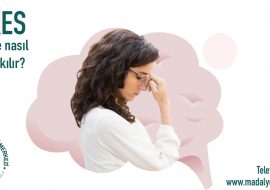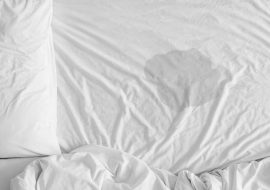
Pica syndrome is a psychiatric disorder classified under the umbrella of eating disorders, encompassing various conditions involving disruptions in eating behaviors.
Pica syndrome involves the regular and persistent consumption, for a minimum of one month, of non-nutritive and non-food substances without a sense of disgust. Common substances ingested in pica syndrome include soap, soil, clay, metal, ice, sand, plastic, cloth, lime, paper, hair, matchstick tips, chalk, paint, and coins.
Symptoms of Pica Syndrome:
Consuming non-nutritive substances for an extended period poses threats to intestinal, gastric, and dental health. Some non-food items may also pose poisoning risks, creating life-threatening situations for individuals.
In pica syndrome:
The consumption of non-nutritive substances does not align with the individual’s developmental level. (For example, the act of infants putting various objects in their mouths during the crawling phase is not considered pica syndrome.)
Eating behaviors deviate from socially or culturally accepted norms. (Some cultures may have practices involving the consumption of specific non-food items.)
The eating behavior is severe enough to warrant additional evaluation, even if it arises from another psychiatric condition.
General Features of Pica Syndrome:
Pica syndrome takes its name from the Latin word “pica,” meaning magpie, a bird known for consuming a variety of items, including non-food items. Although pica syndrome typically emerges during childhood, it can affect individuals of all age groups.
Causes of Pica Syndrome:
Various factors, including socio-economic, physiological, psychological, and behavioral elements, contribute to the development of pica syndrome.
Socio-economic factors play a role, particularly in developing societies with insufficient nutrition. Deficiencies in vital vitamins and minerals, such as zinc and iron, are known to play a crucial role in the development of pica syndrome.
Dietary programs promoting restrictive eating may lead to vitamin deficiencies and contribute to the development of pica syndrome.
Pregnant and breastfeeding women with nutritional deficiencies may exhibit pica syndrome.
Kidney diseases have been linked to the onset of pica syndrome.
Psychological factors also play a significant role in the development of pica syndrome.
Lack of communication within the family, parental neglect, and sensory deprivation contribute to eating disorders in children, including pica syndrome.
Pica syndrome can develop as a coping mechanism for stress and anxiety.
Some psychiatric illnesses may lead to the emergence of pica syndrome.
Treatment of Pica Syndrome:
The treatment of pica syndrome involves the collaboration of psychiatrists, psychotherapists, and dietitians. The management of treatment is determined based on the physiological and psychological condition of the patient and the underlying cause of the syndrome.
In cases where pica syndrome results from mineral and vitamin deficiencies:
Identification of the necessary vitamins and minerals is crucial.
Dietary patterns are adjusted, and missing nutrients are incorporated into the diet.
For cases where psychological factors contribute to pica syndrome:
Psychotherapy and behavioral therapy techniques are employed to address and treat eating behavior disorders.
References:
Ertekin, Y., Korkut, Y., Sönmez, C., & Ertekin, H. (2012). A Different Case of Pica Disorder. Ankara Medical Journal, 12(3), 158-159.
Gümüş, Ç., Alver, E., & Körpe, H. (2020). A Social Responsibility Example: Magazine Ad Designs for Promoting Pica Syndrome.
Ünal, R. N., & Samur, F. G. (2012). The Effects of Pica Behavior on Human Health. Nutrition and Diet Journal, 40(2), 155-162.












